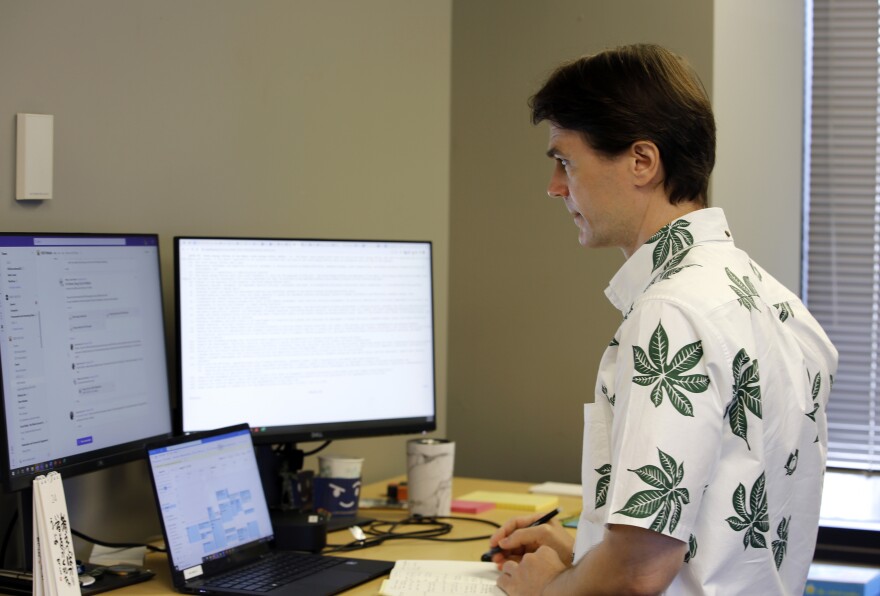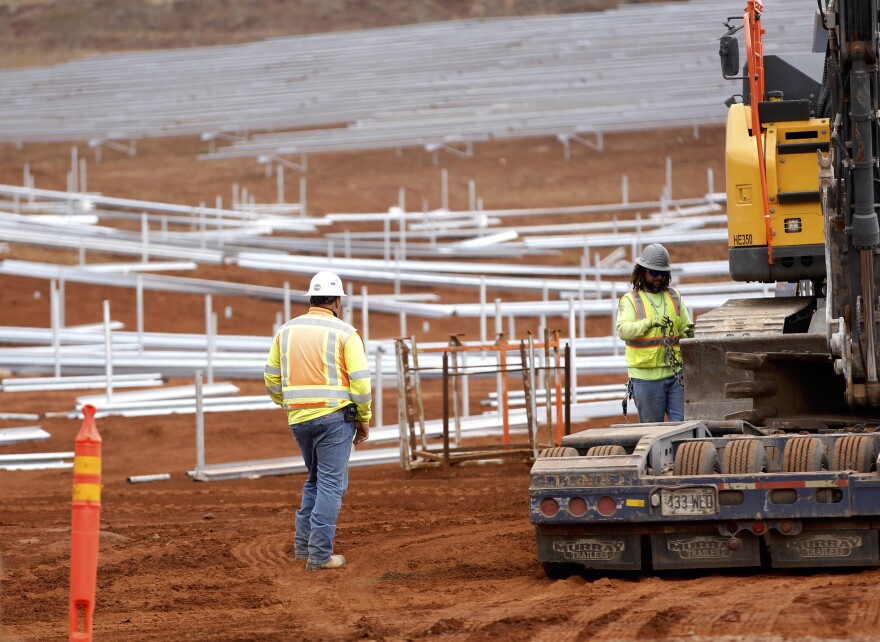AES Hawaiʻi’s coal-fired power plant in Kapolei ceased operations Thursday, marking the end of Oʻahu's 30-year relationship with coal.
Coal has been Hawaiʻi’s cheapest source of energy. Lower-cost renewable projects are scheduled to come online in the next two years. But in the meantime, Oʻahu residents are on the hook for higher energy bills as the state burns more expensive petroleum for power.
The Hawaiian Electric Company had projected ratepayers would see a 7% spike in their bills, but Thursday revised that to 4% because of a drop in oil prices.
Hawaiʻi’s Chief Energy Officer Scott Glenn says this isn’t the first time the state's energy transition has come with growing pains.
"When the coal plant was built, electric bills went up for the coal becoming part of the energy mix," says Glenn. "And we've all forgotten about that."
Thirty years ago, the state had the opposite problem: coal was more expensive than oil.
According to the Hawaiʻi State Energy Office, consumers faced a 19% increase in energy costs when the coal plant first went online in 1992.
Why build a costly new power plant in the middle of the Pacific miles away from any coal source?
While oil was cheap at that exact moment, its prices were volatile, subject to fluctuations well beyond the state's control.

"People were still reacting to the oil embargo crisis in the '70s and looking at ways to diversify away from our dependence on foreign oil," says Glenn.
Coal may be dirty, but it's also reliable. And so Oʻahu residents shouldered the extra cost in the short term, and the lights stayed on.
But now, that steadiness isn't an advantage. It's a roadblock in Hawaiʻi's transition to renewable energy.
Glenn says that the coal plant is part of an "older model" of energy production that relies on a certain amount of baseload power, or a fixed minimum of power provided to the grid at any one time.
"It just goes 24/7, all day, all night, the same amount, period," says Glenn.
The coal plant is not built to adjust its output, even when there is more renewable energy available.
"And so when people say, 'Oh, well, why isn't that wind turbine going, it's a windy day,' it's probably because of the coal plant," says Glenn. "Because the coal plant has to burn at a certain amount."
Retiring the coal plant could reduce the curtailment of renewable power on Oʻahu, accelerating our transition off fossil fuels.
In 2020, the state Legislature passed a law banning the use of coal for energy production at the start of 2023. Hawaiʻi has mandated a transition to 100% renewable energy by 2045, and was the first state to set such a goal.
And we know what that future will look like because it's already happening — one island over.

"What we've seen on Kauaʻi, which is where we want Oʻahu to be, Kauaʻi is already 100% renewable during the day, it's 70% renewable overall," says Glenn. "And they have the highest reliability metrics in the state now for their grid, and they also have the lowest rates (of energy costs)."
Glenn says Oʻahuʻs renewable future is close at hand. Even now, the island has more power available to the grid through rooftop solar than through any one power plant.
"We're already moving pretty far down this pathway," says Glenn. "The coal plant was built to last 30 years, was maintained to last 30 years, and here we are 30 years later retiring it."





